Start Exploring Keyword Ideas
Use Serpstat to find the best keywords for your website
How To Improve Your Google Rankings Without Getting Penalized: 5 Tips And Tricks + Infographic

These tactics can work for some time, but as soon as Google catches you doing them, they will penalize your website. Forget about driving any organic traffic for months until you erase these tricks from your website, if you can ever do it.
SEO takes months to pay off, but once it does, you can expect to attract large volumes of traffic on autopilot. If you want to improve your Google rankings without getting penalized, here are five tips and tricks you can use today.
Build white-hat links aggressively with guest posting
Back in 2010, you could add the pages you wanted links to a "backlink blaster"—a software that created spammy links automatically—and you would get hundreds of links in a few hours. It may seem far fetched, but that worked!
Those days are long gone. Google can identify pages that get an unnatural number of links from low-quality websites, leading to a penalization. This doesn't mean you can't build links aggressively as black-hat SEOs used to do; you can, but only if you build white-hat links with the right tactics, the right plan, and the right tools.
Guest posting is as old as SEO itself, but it has continued to work exceptionally well. For example, Shane Barker used guest posting to 12x his organic traffic under two years and rank for highly competitive keywords in the competitive digital marketing industry.

Make a list of target sites
"keyword" + "become a contributor"
"keyword" + "contribute"
"keyword" + "guest post by"
"keyword" + "guest post guidelines"
"keyword" + "submission guidelines"
"keyword" + "this guest post is from"
"keyword" + "this guest post was written"
"keyword" + "this is a guest article"
"keyword" + "this is a guest post by"
"keyword" + "write for us"
"keyword" + inurl:guest-posts
"keyword" + inurl:write-for-us
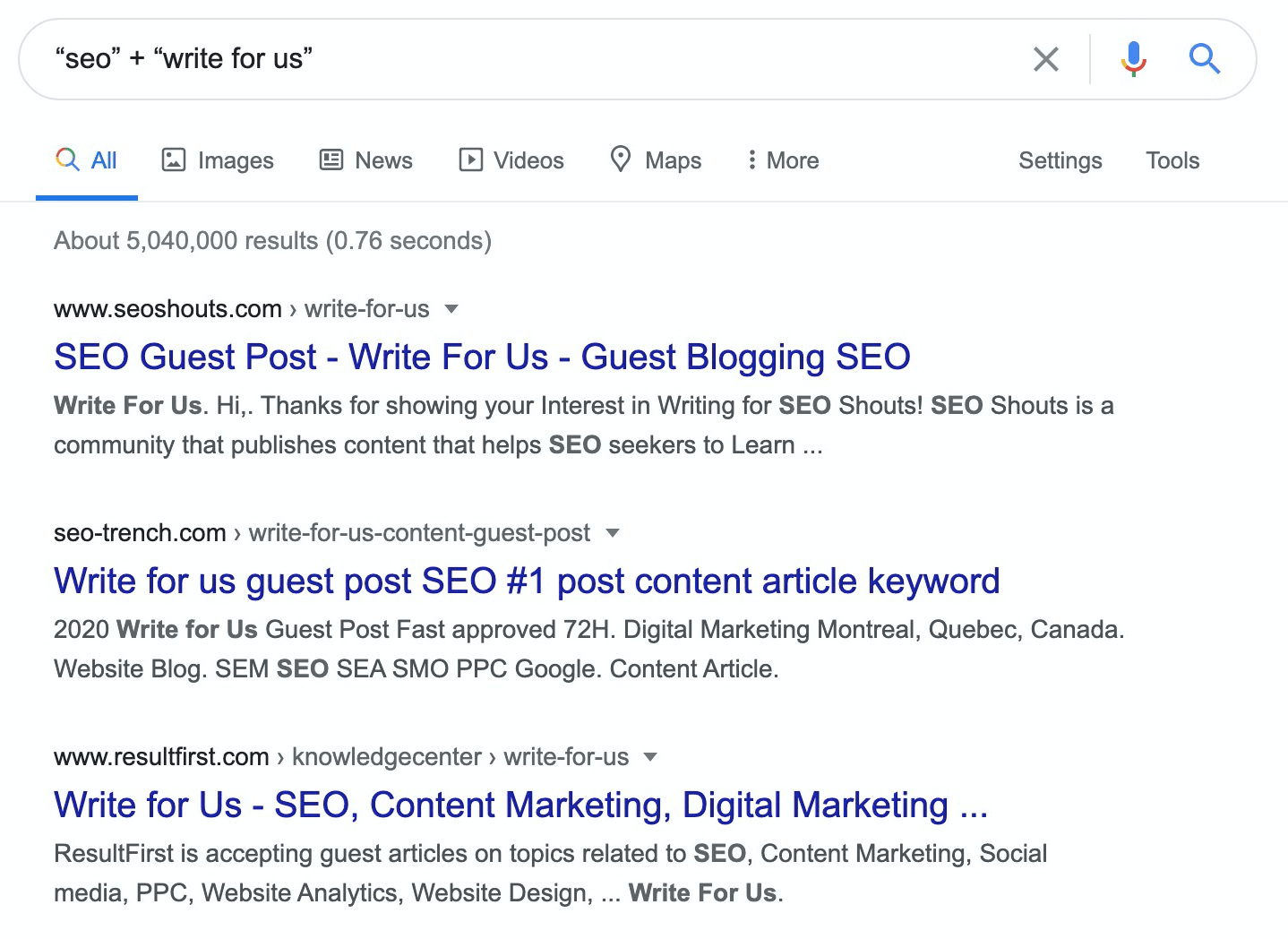
Verify the opportunities
Visit every page you have found and manually verify their relevance by checking off the following points:
- The site openly states they accept guest posts;
- The site has published guest posts;
- The site allows for links in their guest posts;
- The site has high authority (more on that later on);
- The site publishes about topics relevant to your website's
Verifying the quality of the sites you found will increase the chances of pitching sites that will:
- Accept your guest post;
- Link to your site;
- Increase your Google keyword rankings.
Find the targets
- See if their guest post guidelines page shares an email or submission form—if you find either one, your job is done;
- See who's the editor or content manager;
- See if they have a profile or "About" page where they share their email addresses.
My previous search found a website that openly states they accept guest posts; they even share an email address where I can send them my ideas:

- Go to the company's LinkedIn page and manually find the editor—usually, that's the content manager;
- Plug in the site's address and editor's name in a tool like Hunter.
Add all the information you find on the list you created previously.
Send a pitch
When it comes to writing the email template, here's one you can use in your campaign:
Hey [NAME],
I'm [YOUR NAME], and [EXPLAIN WHAT YOU DO].
I know you like to publish in-depth articles with unique insights on [TOPICS THEY COVER]. I've come up with some ideas your audience will surely love to read:
- LIST YOUR IDEAS
Have a great day.
Best,
[YOUR NAME]
Repeat this process repeatedly, and you will get dozens of white-hat links per month and scale your link acquisition without getting penalized. If you plan to outsource your link building, make sure they follow this process to avoid any penalties.
Build links from authoritative sites
Take a look at the keyword "web promotion sites," which Serpstat ranks in the first position. While Serpstat's page doesn't have the most links, it has high-quality links that explain, among other factors, its first position.

- Website A has high authority
- Website A creates a backlink on page A
- The backlink points to page B from website B
- Website A's backlink passes part of their authority to page B, something that it's known as "link equity" or "link juice"
The higher the equity a page receives—which can come from one or multiple pages from multiple websites—the higher the chances it will become authoritative on its own.
While the exact definition of authority hides deep in Google's ranking algorithm, you can get an approximation by using Serpstat Domain Rank backlink metric.
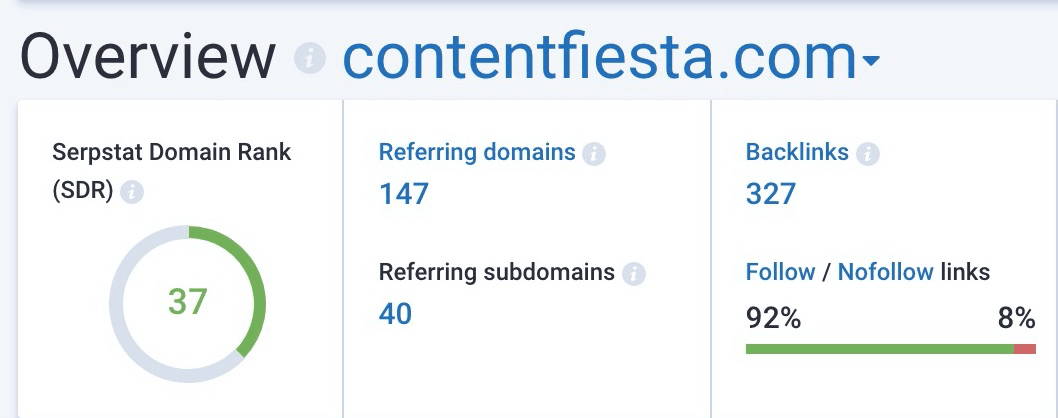
To build these links, Neal Taparia, who runs classic game site Solitaire, suggests researching overlapping topics journalists of top publications like to cover, and conducting some unique research around the topic.
His team, for example, surveyed what games like solitaire people were playing during the pandemic lockdowns because they noticed journalists often covered similar topics. They were able to use that primary research to get coverage in good publications.
Milosz Krasinski, Managing Director at web consulting company chillifruit.com, recommends a different approach:
Similarly, Jimmy Rodriguez, COO at 3dcart.com, recommends taking the following steps:
Use natural anchor text
For example, my Grammarly review piece received over 20 links with the anchor text "Grammarly," which explains why it ranks high for several keywords that feature "Grammarly" in it.
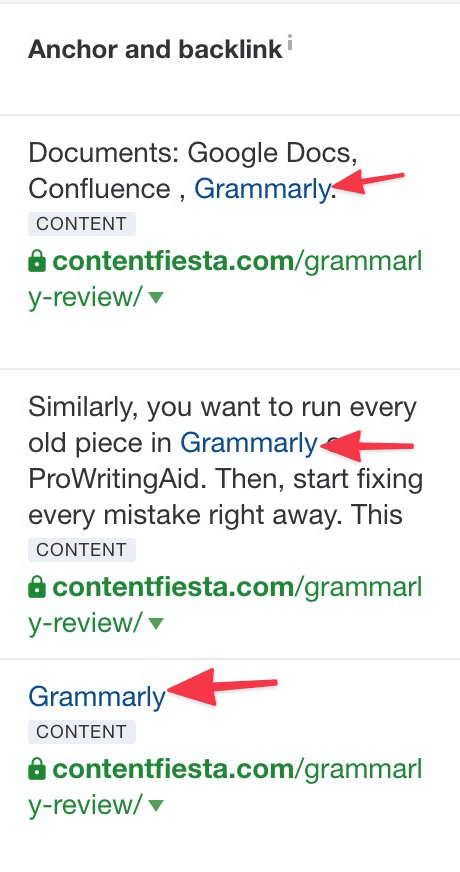
To find the right balance, optimize your anchor text by mixing:
- Branded anchor text (e.g., "Serpstat")
- Exact-match anchor text (e.g., "SEO tool")
- Phrase-match anchor text (e.g., "best SEO analysis tool")
- Broad-match anchor text (e.g., "tool for SEO")
- "Raw" anchor text (e.g., "https://serpstat.com/)
If you see that your link building isn't generating positive results, or even worse, your site is losing its rankings, it may be due to an over-reliance on exact-match anchor text.
Add your domain to an SEO tool like Serpstat and analyze all your inbound links' anchor text. Focus on your highest linked pages and their respective anchor texts.
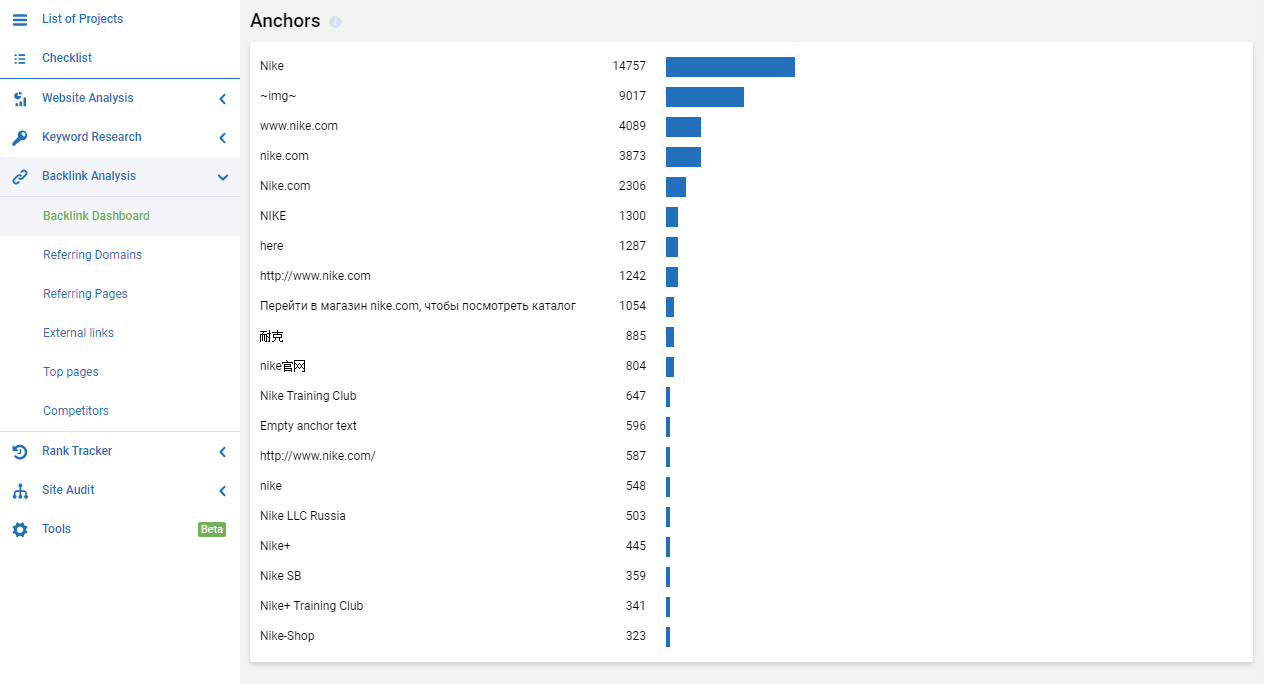
In this case, reach out to these sites, and ask them to replace the anchor text with a phrase or broad match one. Also, make sure your link building efforts mix your anchor text, so Google doesn't penalize your site.
Don't over-optimize your on-site
As you know, on-site page optimization is the process of adding the desired keyword to rank for in different parts of your pages, including:
- The title tag
- The URL
- The content
- The alt-tag
- The H1, H2, and H3 subheadings
- The internal links.
In other words, you want to optimize your website for your visitors, not for Google's bots. If you add your exact-match keyword too many times—and unnaturally so—Google will know there's something off, which will cause a penalization.
If you have already done any on-site optimization to your pages, or plan on doing so, balance the use of your keywords. You can manually search for your top keyword to see how many times it gets repeated; alternatively, you can use a tool like TextOptimizer to assist you.
Let's take as an example of how this link building company optimizes their page copy towards the keyword "link building services."
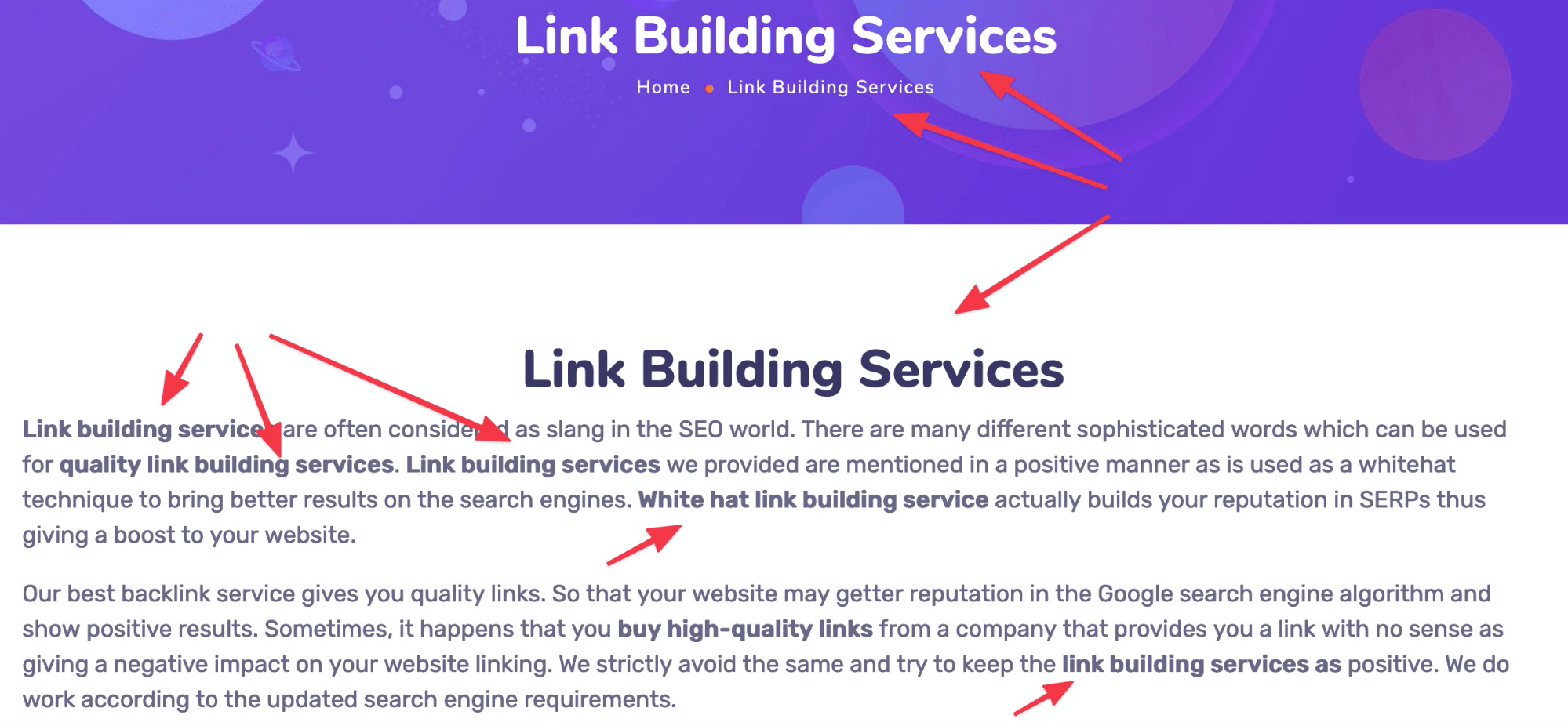
The fact the page is on page 7 shows it worked for the company, but it won't work to get them anywhere close to the top 10.
To balance your on-site optimization, add your page into Serpstat's One Page Audit, and fix all the mistakes the tool finds.

- Re-optimize your content following Google's Quality Guidelines
- Redirect the page to a new one that's not over-optimized
Optimize your on-site by adding the keywords in each of the places mentioned before, but don't abuse it. Remember to optimize for your readers, not for Google.
Make your website fast
In 2010, Google publicly stated that page speed had become a ranking factor, albeit "focused on desktop searches" only. Eight years later, Google announced that speed also affected mobile searches.
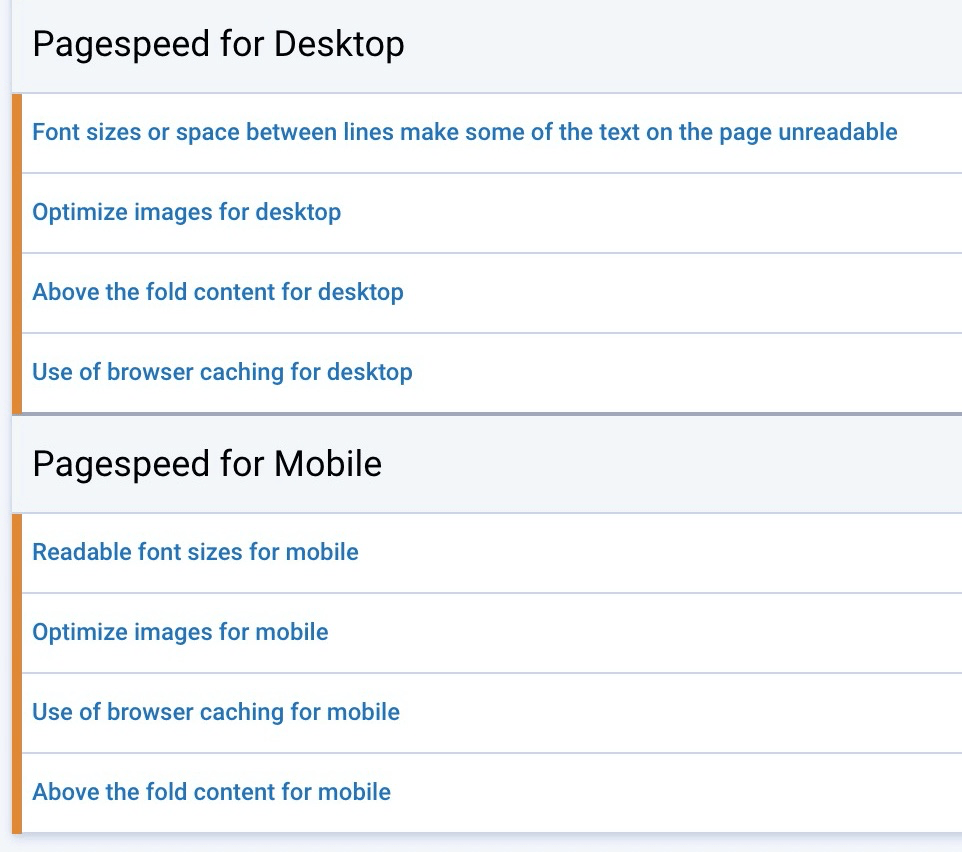
- Enable File Compression. Compress your files with Gzip, a software application that reduces the size of your CSS, HTML, and JavaScript files over 150 bytes.
- Minify CSS, JavaScript, and HTML. This means you remove any spaces, commas, and unnecessary characters from your code.
- Leverage Browser Caching. This allows visitors to reuse files that they have already loaded in their browser in previous visits.
- Use a CDN: CDNs, or content distribution networks, are networks of servers that allow you to distribute your files all over the world. This allows for faster upload of files.
- Optimize Your Images. Use JPEG whenever possible, as they are often smaller in size, and use lossless compression. You can use a tool like ImageOptim to do the work for you.
Some of these changes require a site-wide optimization, while others—like image optimization—require a constant optimization. As you increase the speed of your website, you can expect an improvement in your rankings.
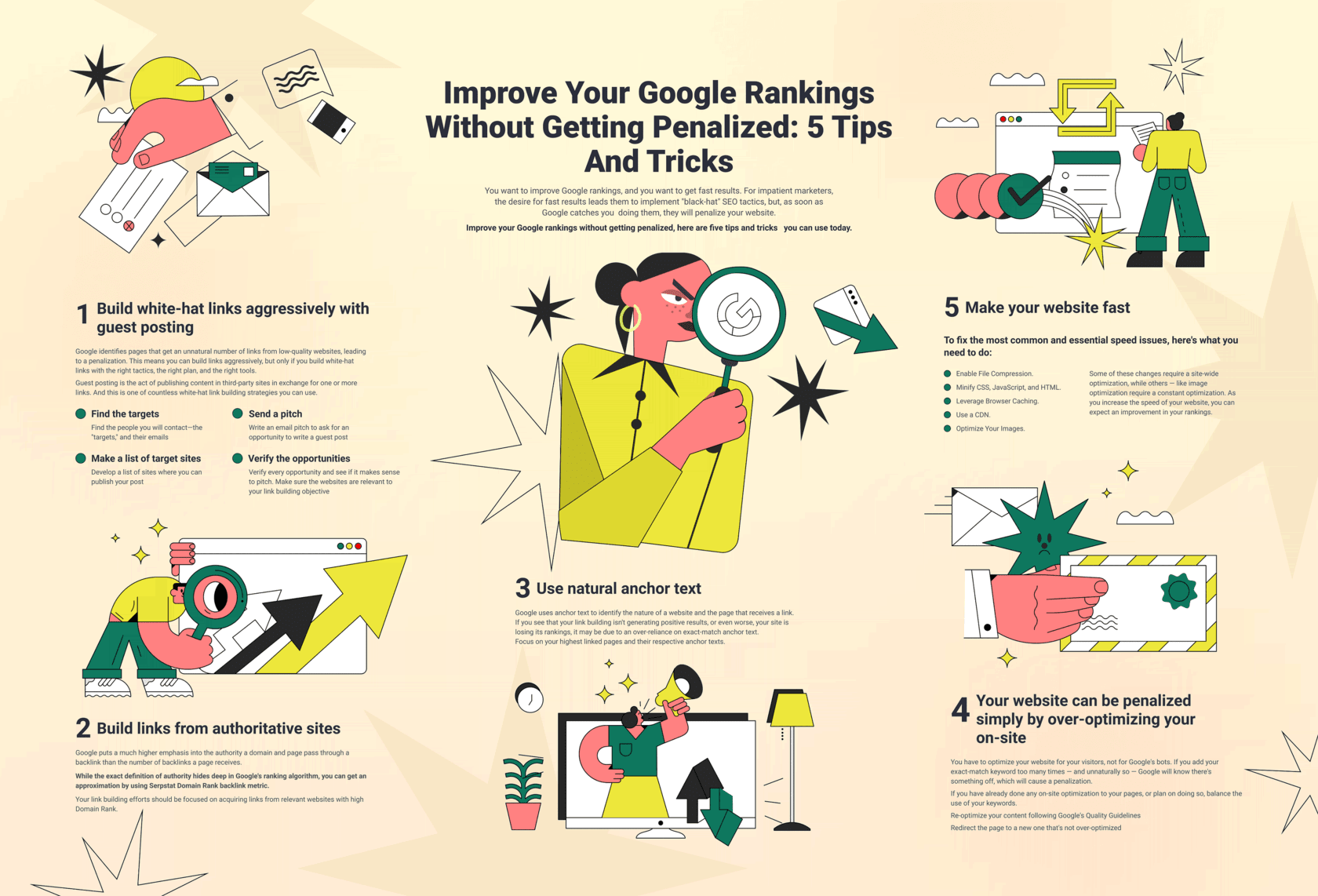
Conclusion
- Use scalable white-hat link building tactics like guest posting and partner-based link building.
- Build links from authoritative sites that have a high TrustRank and PageRank.
- Use natural anchor text; mix exact match with broad and phrase match.
- Don't over-optimize your pages; optimize for your visitors, not for Google.
- Optimize your website speed.
As you implement these tactics, you will start to improve your website's rankings and see an increase in your organic traffic. Better yet, you will keep your positions for years to come, and that's what makes Google an incredible traffic acquisition channel.
Speed up your search marketing growth with Serpstat!
Keyword and backlink opportunities, competitors' online strategy, daily rankings and SEO-related issues.
A pack of tools for reducing your time on SEO tasks.
Discover More SEO Tools
Backlink Cheсker
Backlinks checking for any site. Increase the power of your backlink profile
API for SEO
Search big data and get results using SEO API
Competitor Website Analytics
Complete analysis of competitors' websites for SEO and PPC
Keyword Rank Checker
Google Keyword Rankings Checker - gain valuable insights into your website's search engine rankings
Recommended posts
Cases, life hacks, researches, and useful articles
Don’t you have time to follow the news? No worries! Our editor will choose articles that will definitely help you with your work. Join our cozy community :)
By clicking the button, you agree to our privacy policy.

